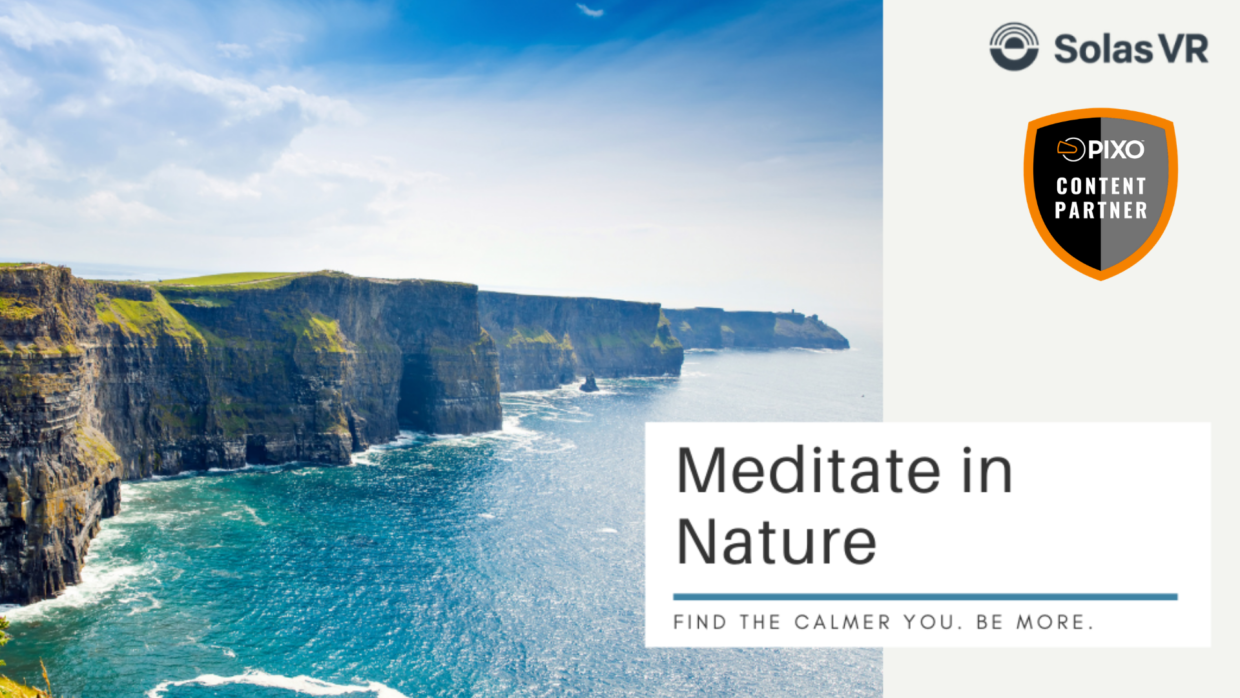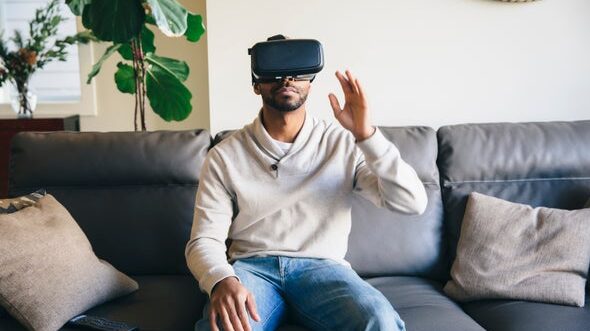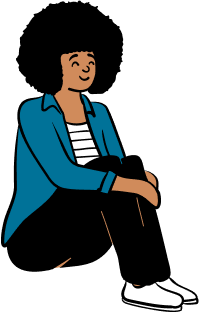
Extended Reality (XR) Solutions Provider and Content Partners Look to Meet Exploding Global Demand for XR
FOR IMMEDIATE RELEASE
ROYAL OAK, Mich. — Enterprise extended reality (XR) solutions provider, PIXO, which launched its groundbreaking XR content distribution and analytics platform, PIXO Apex, in late summer 2020 has announced a major expansion of its content library. Among the array of new offerings are XR modules that go beyond the virtual reality (VR) training category the company has helped define since 2016. This week, PIXO will add new mindfulness and wellness experiences developed by its Dublin, Ireland-based content partners at Solas VR — The Meditation Space, The Breathing Space, and The Wisdom Space, each ‘space’ containing a range of experiences to help users reconnect, refresh, and recenter themselves.
Also available now in the PIXO Content Collection are new VR training titles relevant to multiple industries, including Lockout/Tagout, Ladder Safety, Fire Prevention (Construction Site), Hazard Recognition (Construction Site), Housekeeping (Construction Site), COVID-19 PPE Usage & Handwashing, Pole Top Rescue, First Aid, CPR/AED (Adult & Infant), Fire Extinguisher Training, and Low Voltage Rescue. CEO Sean Hurwitz says new content is critical to PIXO’s success.
“The demand for new and relevant enterprise XR content is profound,” Hurwitz said of the industry’s rapid growth, which PIXO is experiencing firsthand. According to a recent study by PwC, the XR industry is expected to contribute an eye-opening $1.5 trillion to global GDP by 2030. But that growth in demand creates supply side issues, Hurwitz added. “Our customers are in constant need of new modules, for training and otherwise. As a business, we have to meet that demand or we’ll leave clients wanting. That’s why having partners like Solas VR is critical.”
To satisfy the exploding demand for XR content, Hurwitz said, PIXO has leveraged a different kind of business model. Enabled by his company’s content-agnostic platform, which can distribute virtual, augmented, or mixed reality content from virtually any source, PIXO seeks collaboration rather than competition with other XR content creators. While PIXO still develops premium XR content itself, the company has increasingly utilized a growing network of third party XR developers — PIXO Content Partners — to curate relevant, high quality XR titles which contributors can monetize on the PIXO Apex platform through revenue-sharing agreements.
“The logistical challenges of COVID dumped jet fuel onto a fire. Remote work, training, and collaboration isn’t a ‘want’ anymore, but a ‘need’ for enterprises, so offering engaging new content is essential,” Hurwitz said. “Companies that were competitors two years ago are our partners today. By offering their content on our platform, they gain access to new audiences and revenue streams while we give our clients what they need. It’s a win-win.”
For its part, Solas VR is also looking for a ‘win-win’ by offering the PIXO audience a different kind of XR experience: immersive 360-degree nature videos. The range of offerings are ideal for what the company calls “micro-breaks”, which provide everyone from new hires to C-suite executives a welcome respite from the daily grind. These micro-breaks allow users to reset and refocus at any time during the day, improving performance in the short term and building resilience and mental health in the long term. They also provide practical breathing techniques and a range of guided meditations to help employers and employees navigate an increasingly complex world.
“Our focus is mindfulness and wellness; putting users in a better state of mind,” said Solas VR CEO Stephen Pitcher. “This partnership isn’t just about training, but helping to create healthier employees and companies overall. XR allows people to feel more connected — not just with this technology, but with nature and themselves.”




